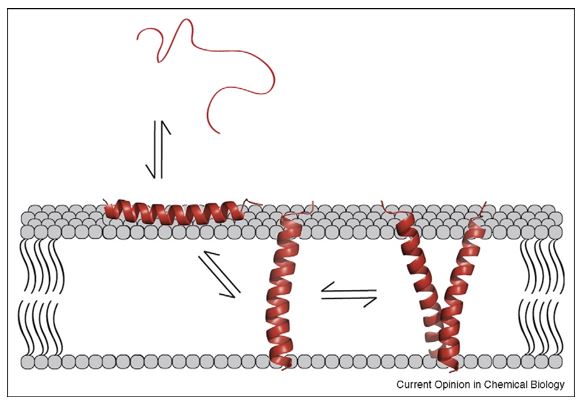Membrane proteins are critical participants in a wide variety of biological processes including cell adhesion, signaling, transport, and enzymatic activity. They comprise more than 30% of open reading frames and are targeted by over half of currently available pharmaceutical drugs. Creative Biolabs has focused on the development of protein engineering services for many years and has established excellent protein engineering platforms for drug development. We provide a variety of protein engineering services to meet the diverse needs of our customers.
Since its early days, the design has been primarily a tool for investigating the factors that govern the folding, interactions, and activity of proteins. In this capacity, the design has been an important contributor to our understanding of integral membrane protein folding. Thanks to the development of fast sampling algorithms and the formulation of effective energy functions, computational membrane protein design has made impressive advancements. The advanced computational methods that have been developed for soluble proteins have begun to be applied to membrane proteins. The computational methods used in protein design incorporate a number of simplifications and assumptions that are necessary to make the problem tractable. Because of these simplifications, specialized energy functions become necessary. The energy functions used in protein design often contain empirical terms of statistical derivation and physical terms.
 Fig.1 Schematic of transmembrane peptide folding.
Fig.1 Schematic of transmembrane peptide folding.
With the recent increase in available membrane protein structures, high-resolution modeling methods including protein design have started to emerge. Two notable achievements include the helix-helix interface design and design of a four-helix bundle that transports electron across the membrane. Therefore, we can provide these two knowledge-based membrane protein design services to meet customers' specific requirements.
The folding of α-helical proteins in the membrane can be viewed as a two-stage process: first, hydrophobic protein segments associate with and are inserted across the membrane lipid bilayer, with simultaneous formation of secondary structure; then, individual helices associate laterally into more complex multi-helical tertiary structures. Overall, the two major factors that have emerged as contributors to membrane protein folding are van der Waals forces and polar interactions.
In nature, membrane proteins are at the core of energy conversion processes to support life. These functions require the organization of redox-active cofactors in chains responsible for directional electron transfer. Scientists reported a functional membrane protein designed de novo with the objective of facilitating electron transfer across a lipid bilayer (called PRIME). The design is a 24 amino acid long D2-symmetrical antiparallel homo-tetramer that sandwiches two non-natural iron diphenylporphyrins (FeIIIDPP). The backbone was based on a section of a longer water-soluble design that contained four porphyrin moieties. Using computational methods, the results show that PRIME can perform electron transfer in a phospholipid bilayer.
Creative Biolabs has been involved in the field of protein engineering for many years and we are committed to completing your project with high quality. We have accumulated a wealth of scientific experience from our completed projects and provide you with the best services to ensure your requirements are met. If you are interested in our services, please contact us for more details.
All listed services and products are For Research Use Only. Do Not use in any diagnostic or therapeutic applications.